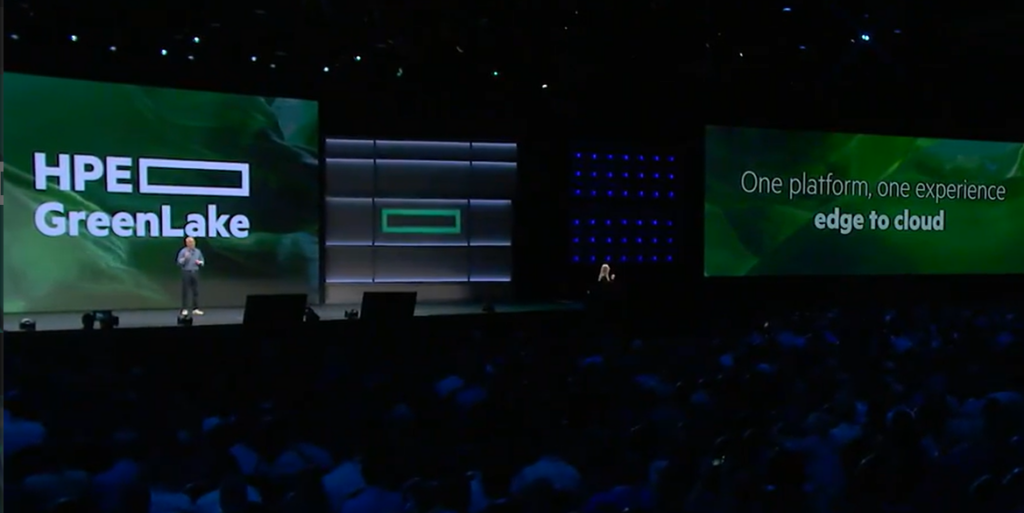“Once you move the data into the public cloud, it’s like checking into Hotel California.”
So said Hewlett Packard Enterprise (HPE) CEO Antonio Neri while addressing press and analysts at HPE Discover 2022 last week. The obvious implication being, you can check into the cloud, but you can never leave – well, not without an expensive price tag to pay beforehand.
The event in Frankfurt, Germany was notable for two things: a giant push on the vendor’s hybrid ‘cloud to edge’ platform HPE GreenLake, and HPE taking shots at the public cloud.
One exec described organizations as suffering from a collective ‘cloud hangover.’ So is the party really over for the public cloud?
HPE contends that, despite the hype, the public cloud alone can’t meet all of an organization’s needs. The company is positioning GreenLake as an alternative to the public cloud. It promises to bring the cloud to wherever your workloads run: at the edge, in a colocation, or in the data center. HPE argues that as more data gets created at the edge, organizations will need to bring the cloud to the data and the applications, not the other way around.
Exploding the public cloud myth
Matt Harris, HPE’s UK managing director, told ERP Today that organizations have, undeniably, built their digital transformations on the cloud over the past decade. However, there is now a market understanding that cloud needs to be an operating model, rather than a destination.
“With hyperscale multi-tenant cloud it is quite easy to put your data there, but quite difficult to take it back. It’s very expensive to do so. It’s that multi-tenant hyperscale lock-in that we’re experiencing.”
Tom Gilbert, head of cloud and middleware at Barclays, said the bank started moving towards a multicloud approach before the pandemic.
“Multicloud for us is about enabling meaningful public cloud migrations. [It’s about] re-architecting applications [to] get up the value chain in those environments to get the most out of them, while using our private cloud as an engine room for transformation and technology debt remediation at scale.”
Harris, meanwhile, is keen to burst the bubble of hype that may still surround the public cloud.
“For me, when I think about hyperscale cloud, where it really brings value and comes to life is when you’ve got very ‘peaky’ workloads, or it’s able to provide infinite scale,” he said. “But how many of your workloads need infinite scale and are very peaky in their usage? Has it a given cost benefit by putting them into a hyperscale? A lot of the time that’s not the case.”
Harris said organizations also often mistakenly believe that cloud is a ‘bounce around’ model, where they can move freely between AWS and Microsoft Azure to find the best prices, for example.
“You can’t do that – you’re not moving workloads around, you’re not moving data around. And the reality is, there’s very little stopping the major hyperscalers adding zeros to the bill for customers. Given costs are going up, energy prices are going up, we’re all going to have some difficult bills to pay.”
Rising costs of public cloud
Indeed, Penny Madsen, a senior research director for IDC specializing in providing insights into cloud adoption and investment, said that organizations of all sizes are reassessing their workload and cloud strategies.
Critically, she believes that despite a surge in organizations adopting cloud during the pandemic, current geopolitical and economic pressures signal a change on the horizon. Using the cloud hangover metaphor, more firms are sobering up as the cost of the cloud sets in.
“In terms of cloud we’ve started to see companies suffer from increased professional services costs, and increased software licensing fees as well. These were in line with contract renewal cycles, where companies were facing increases, largely due to skills costs. What we’re seeing now are those energy costs trickling down, we’re seeing rising public cloud infrastructure costs.”
And while cloud is still a third of IT budgets, said Madsen, those budgets are decreasing in line as a proportion of revenue, which is also being squeezed. So ultimately, companies are now trying to do more with a lot less. That means they’re going to be a lot more strategic about how they consume IT, and what they consume.
For now, public cloud adoption continues to grow. Worldwide spending on public cloud services is forecast to grow 20.7 percent to total $591.8bn in 2023, up from $490.3bn in 2022, according to Gartner. This is higher than the 18.8 percent growth forecast for 2022.
However, the analyst notes that, at the end of the day, organizations can only spend what they have.
“Cloud spending could decrease if overall IT budgets shrink, given that cloud continues to be the largest chunk of IT spend and proportionate budget growth.”
After the exuberance of the initial rush to the public cloud, could organizations be reassessing their IT strategies in the cold light of day? Certainly, this appears to be the case for some firms. It will be interesting to see if public cloud maintains it popularity in 2023, or whether many more firms start to check out of the hotel.




